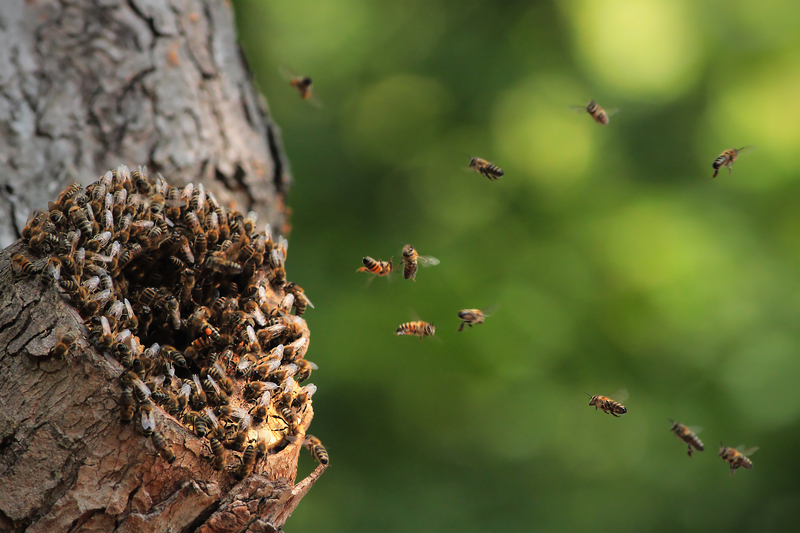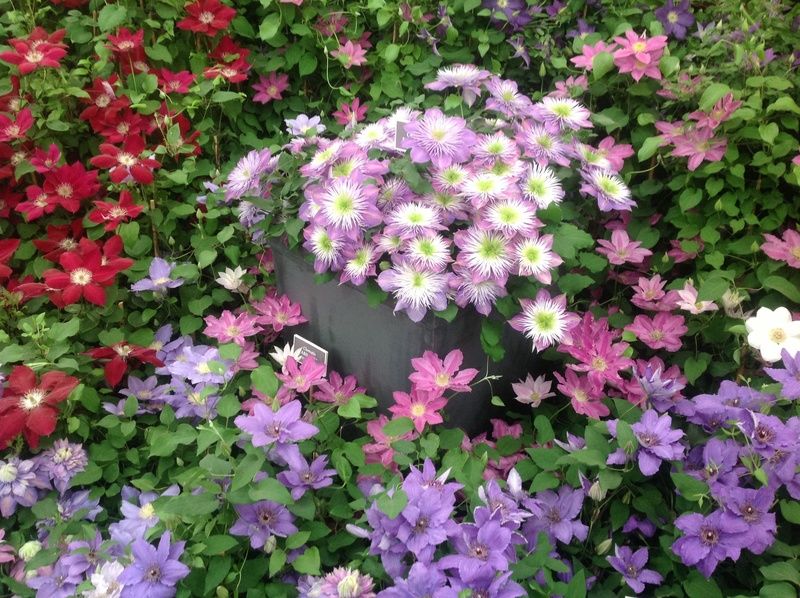Green Thumb Guidance: 9 Vital Tips for Beginner Gardeners
Posted on 25/06/2025
Green Thumb Guidance: 9 Vital Tips for Beginner Gardeners
If you've always admired flourishing gardens and secretly wished for a green thumb of your own, you're not alone. Many aspiring gardeners dream of turning their outdoor (or indoor!) spaces into lush paradises but don't know where to begin. Fortunately, with the right knowledge, anyone can cultivate a thriving garden. Welcome to your ultimate green thumb guidance--the nine essential gardening tips every beginner should know!
Why Green Thumb Guidance Matters for Novice Gardeners
Gardening has countless rewards, from enjoying fresh produce to boosting mental wellbeing. However, starting a garden can be intimidating if you lack experience. With these green thumb tips for beginners, you'll avoid common pitfalls and set yourself on the path to gardening success.

9 Vital Tips for Beginner Gardeners
- Plan Your Garden Carefully
- Start Small and Expand Gradually
- Pick the Right Plants for Your Zone
- Know Your Soil and Improve It
- Master Watering Skills
- Understand Sunlight Requirements
- Embrace Mulching
- Observe and Learn from Nature
- Practice Patience and Keep Learning
1. Plan Your Garden Carefully
Successful gardening starts long before you dig your first hole. Planning is the cornerstone of green thumb success. Consider the following aspects when planning:
- Location: Find areas in your yard or home that receive appropriate sunlight.
- Purpose: Do you want flowers, vegetables, or a mix?
- Size: Choose a manageable space for your first garden.
- Accessibility: Ensure easy access to water and tools.
A garden layout sketch not only helps visualize your plot but prevents overcrowding and makes care easier. Remember, a well-thought-out plan boosts your green thumb gardening abilities from day one.
2. Start Small and Expand Gradually
Beginner gardeners often get carried away and bite off more than they can chew. Starting with a small, manageable area allows you to focus on key routines--watering, weeding, and monitoring plant health.
Once you're confident with your mini-garden, you can nurture your green thumb skills further by expanding the plot or growing new varieties.
3. Pick the Right Plants for Your Zone
All plants are not created equal, and their success largely depends on your local climate. Consult the USDA Plant Hardiness Zone Map or your country's equivalent to find which plants thrive in your region.
Some guidelines for choosing the right plants for beginner gardeners:
- Research local favorites: Ask neighbors or your local nursery about easy-to-grow varieties.
- Focus on resilience: Hardy plants like marigolds, zinnias, basil, and lettuce are forgiving for beginners.
- Select disease-resistant types: Reduces frustration from common issues.
- Match plant to environment: Examples: Choose shade-loving plants for north-facing balconies, sun-lovers for south.
4. Know Your Soil and Improve It
Great gardens start with great soil. Soil type--clay, sand, loam, or silt--influences drainage, nutrient content, and plant health. Testing your soil helps you understand its needs.
- Buy a soil test kit from a gardening store or send a sample to an agricultural extension office.
- Check for texture and drainage: Squeeze a handful: does it form a ribbon or crumble?
- Correct imbalances: Add compost to enrich sandy soil, or sand and organic matter to break up clay soil.
Healthy soil is the true secret ingredient of green thumb gardening. Regularly adding compost or well-rotted manure can transform poor soil into a living, nutrient-rich foundation for thriving plants.
5. Master Watering Skills
Watering is more than just turning on a sprinkler. Plants have unique moisture needs at different stages of life. Here's how to provide optimal hydration:
- Check soil moisture: The top inch should feel cool and moist, not soggy.
- Water deeply but less frequently: Encourages deep root growth.
- Water in the morning: Minimizes evaporation and fungal diseases.
- Be consistent: Irregular watering can stress plants.
Develop your green thumb watering sense by checking your plants every day, especially during heatwaves and dry spells.
6. Understand Sunlight Requirements
Sunlight is like food for your plants. Most vegetables and annual flowers need at least 6-8 hours of direct sun daily, but some herbs, ferns, and shade plants need much less.
- Monitor your garden's sunlight: Track sun patterns over several days before planting.
- Group plants by light preference: Place sun-lovers together and shade-lovers in sheltered spots.
Ensuring proper light exposure is a hallmark of experienced, green thumb gardeners.
7. Embrace Mulching
Mulching is a simple but transformative tip--especially for beginners. Applying a layer of organic material (like bark, straw, or compost) around your plants provides these advantages:
- Keeps soil moist and cool, reducing watering needs.
- Suppresses weeds that compete for water and nutrients.
- Improves soil as it breaks down, adding organic matter.
For best gardening results, mulch in early spring and replenish as needed.
8. Observe and Learn from Nature
Developing a green thumb means tuning into your garden's subtle cues. Regular observation is the best way to spot problems before they escalate.
- Check leaves, stems, and soil daily: Look for changes in color, spots, or texture.
- Watch for pests: Hand-pick insects or use natural remedies at the first sign.
- Track growth patterns: You'll quickly spot what's thriving and what's struggling.
By learning to "read" your plants, you'll become a smarter, more responsive gardener.
9. Practice Patience and Keep Learning
Gaining a green thumb doesn't happen overnight. Plants grow at their own pace. Sometimes, failures and unexpected outcomes are the best teachers. Here are ways to nurture your gardening confidence:
- Join local gardening groups or online forums to exchange tips and experiences.
- Read gardening books, blogs, and magazines: Keep expanding your knowledge base.
- Track your progress: A garden journal is a great way to learn from mistakes and successes.
Embrace the journey of learning, experiment with new methods, and celebrate every sprout and bloom!
Bonus Green Thumb Guidance: Common Beginner Mistakes to Avoid
- Over-fertilizing: More isn't always better--too much fertilizer can burn plant roots.
- Planting too close together: Crowded plants struggle for sunlight and nutrients.
- Neglecting soil health: Plants can only be as healthy as the soil they're grown in.
- Ignoring pests or diseases: Early detection is critical.
- Giving up too soon: Remember, gardening is a journey.
Avoiding these pitfalls will set you apart from most first-year gardeners and bring you closer to that coveted green thumb status.

The Benefits of Following Expert Green Thumb Guidance
By diligently applying these vital gardening tips, you'll unlock a host of benefits:
- Healthier, more abundant crops or blooms
- Less wasted time, energy, and money
- Greater personal satisfaction and joy in gardening
- A stronger connection to nature and the environment
- A growing sense of confidence as you develop your green thumb
Mastering these green thumb gardening strategies transforms gardening from a daunting chore into a fulfilling and even meditative hobby.
Final Thoughts: Cultivating Your Green Thumb
The journey to becoming a successful gardener is filled with trial, error, learning, and most importantly--joy. With these nine vital green thumb guidance tips, even a complete novice can nurture healthy, beautiful plants and experience the satisfaction of a flourishing garden.
Whether you're growing blooms on a sunny balcony, fresh veggies in raised beds, or succulents on your windowsill, remember: every great gardener started somewhere. The secret lies in patience, observation, and continuous learning.
Your green thumb is not far away--it just needs a little guidance and a lot of love!
Essential Green Thumb Guidance for Beginners: FAQs
- How often should I water my garden? - It depends on your plants, weather, and soil, but most gardens need deep watering 1-2 times a week. Always check soil moisture before watering.
- What plants are best for absolute beginners? - Try radishes, lettuce, marigolds, zinnias, tomatoes, or succulents. These are easy, resilient, and rewarding.
- How can I quickly improve my soil? - Add compost and mulch regularly. Even a little effort makes a big difference over time.
- How do I know if my plants are getting enough sun? - Look for strong, upright growth and plentiful leaves or blooms. Leggy or pale plants may need more sunlight.
Still have questions? Drop by a local gardening club for more personalized green thumb guidance and expert support.
Ready to Dig In? Whether you're just starting out or hoping to improve your green thumb gardening skills, these nine tips will help you create a thriving oasis--one plant at a time. Happy gardening!

